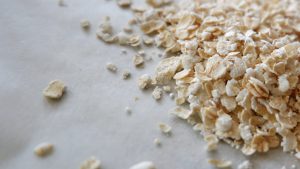Trends in the food and beverage industry are moving more and more toward the idea of ‘natural’, including eating less processed food. This can leave many of us wondering ‘what is the role of processed food for my nutrition?’

A scientific statement in the American Journal of Clinical Nutrition titled Processed foods: contributions to nutrition dug into the data to see if processed foods help us meet dietary guidelines, or provide a hurdle.
What the authors found was that processed foods are critical in helping most of the population meet their nutrient requirements. Specifically, processed foods provided an average of:
- 55% of fiber intake in the US
- 48% of calcium
- 43% of potassium
- 34% of vitamin D
- 64% of iron
- 65% of folate
- 46% of vitamin B12
Many of these have been called out as nutrients to consume more of in diets and deficiency of them is linked with conditions like anemia (iron, B12), osteoporosis (vitamin D, calcium), or birth defects (folate).
Although processed foods are helping many people meet their recommended nutrient intakes, these foods are often higher in nutrients we should limit in our diets than less processed foods. The data shows that processed foods account for:
- 57% of our daily calorie intake
- 52% of saturated fat
- 57% of sodium
- 75% of added sugar
This means there are clear opportunities to reduce content of these nutrients to limit in the diet, especially added sugar and sodium.
What does ‘processed’ really mean?
The word ‘processed’ has wildly different definitions depending on who is using it. To many consumers, it can mean foods on the perimeter of the grocery store. More formal definitions of processing include the following examples, and can be done in the household setting or in a factory.

Heating, freezing, canning, fermenting, drying, smoking, peeling, milling, extrusion, etc
By these definitions, many healthy foods would be considered processed, like oatmeal, frozen vegetables, fermented foods like yogurt, and more.
Due to the variation in types of processing, many organizations have tried to provide a formal definition. The study in the AJCN used the definitions from the International Food Information Council to separate foods by the degree to which they’re processed. The 4 categories are minimally processed foods (washed fruits or vegetables), foods processed for preservation (canned tuna), ready-to-eat foods (breakfast cereal), foods processed for safety or visual appeal (spice mixes), and foods packaged to stay fresh and save time (prepared deli foods).
Ideals vs Reality
Despite the strong push to avoid processed foods in many trendy diets, the study shows the bulk of what we eat is processed in some way. Although eating a diet of only minimally processed foods could sound like a healthy choice, the reality is many people don’t have the access to these types of foods (e.g. food deserts), time or skills to prepare them, or money to afford them. Most likely, processed foods are not going anywhere any time soon, but we can focus on making these foods more similar to minimally processed foods. The ability to create processed foods that are convenient while also providing important nutrients will be key for future innovations. At the same time, sugar and sodium must continue to be reduced to keep consumers within healthy calorie limits. Innovations that help reduce these nutrients while maintaining flavor and functionality will be key for the future, as well.

 We bring the voice of science to some of the most challenging questions facing the food and beverage industry day to day through our network of over 1000 Kerry scientists, external collaborators, and our Scientific Advisory Council. Our content comes straight from scientists and experts in nutrition, taste, food, and sensory sciences to make sure we are providing up-to-date, credible information to guide people shaping the future of food.
We bring the voice of science to some of the most challenging questions facing the food and beverage industry day to day through our network of over 1000 Kerry scientists, external collaborators, and our Scientific Advisory Council. Our content comes straight from scientists and experts in nutrition, taste, food, and sensory sciences to make sure we are providing up-to-date, credible information to guide people shaping the future of food. 